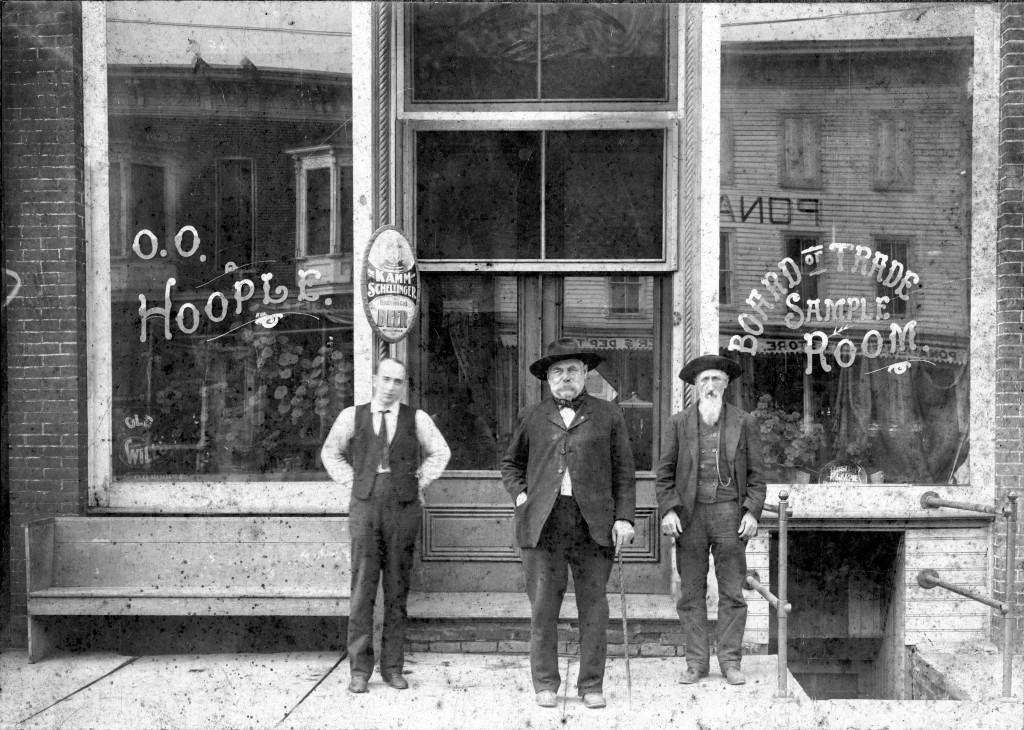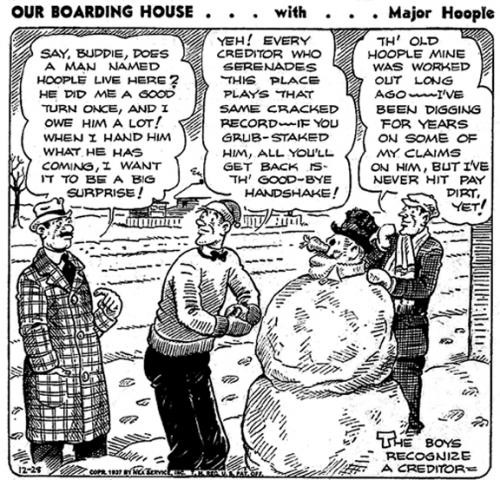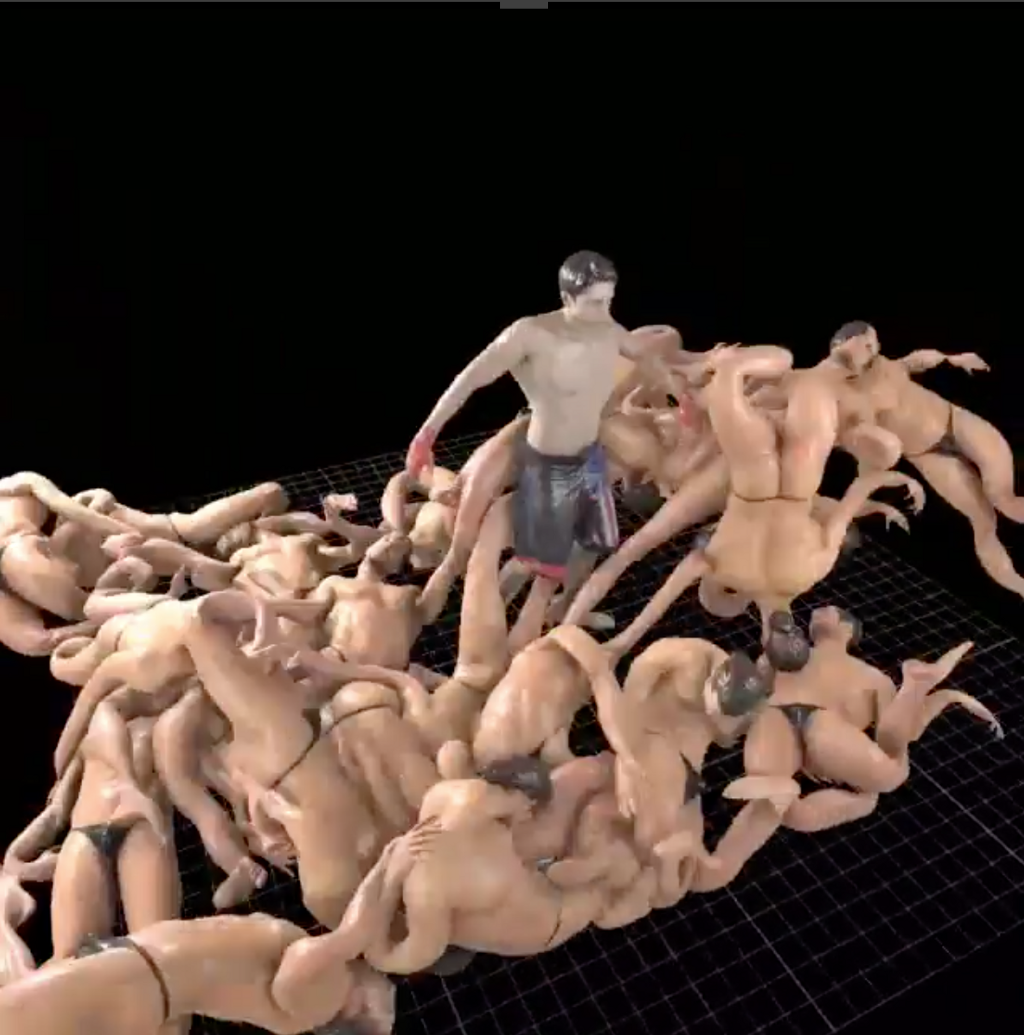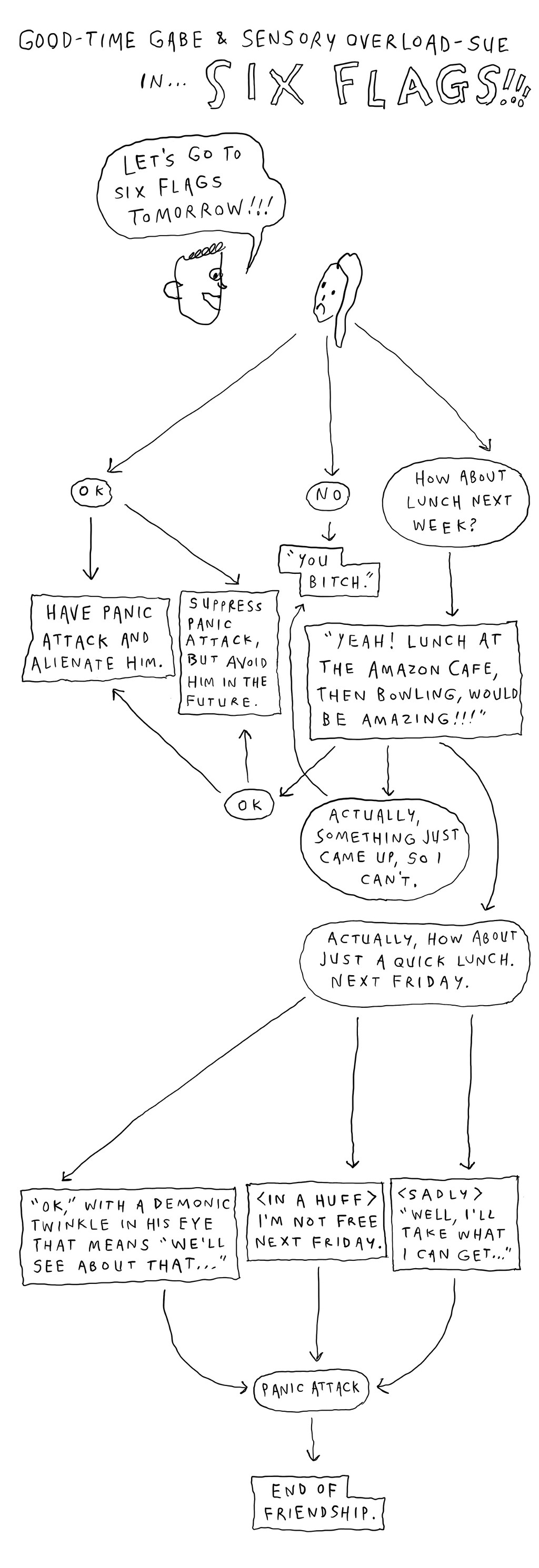What's in a Hoople?
Also known as a ‘quango’

Did you know that in parts of Appalachia a groundhog is called a whistle pig? It’s a much cuter name than groundhog. According to The Dictionary of American Regional English localized slang like “whistle pig” is on the verge of extinction. Acast, a site that hosts podcasts for outlets like Buzzfeed and the Financial Times, is working to change that by encouraging hosts to use the endangered terminology in their podcasts before we give up and settle for identifying every living creature as dat boi. According to Adrienne LaFrance in The Atlantic:
The effort isn’t meant to be subliminal — listeners won’t just hear casually peppered-in references to “bat hides” (dollar bills, according to Southwestern slang) and “skillpots” (turtles, to folks in Washington, D.C., apparently). Instead, says Karl Rosander, the president of Acast Stories USA, these endangered terms will be contextualized and pronounced correctly in a return to public discourse that just might save them.
Last month I interviewed retired electrician, Marty Boorman, for a story about declining American Legion membership and he spoke of my former boss, who owned a nearby bar and passed away recently. “He ran a hoople house,” Marty said. “But it was our hoople house.” It’s the kind of term you kind of understand instinctively, but I’d never heard it before and I wasn’t sure if it was real or just an invention of Marty’s.

I asked a bunch of regulars at older neighborhood bars around Brooklyn and apparently everyone over the age of sixty was familiar with the term but no one was sure where it came from. “A hoople house is a shitty place,” said Tommy McNamara, outside of Smith’s Tavern on 9th Street and 5th Avenue. “You don’t wanna go there.” His wife, Evelyn, and their friend, John, reaffirmed this:
Evelyn: A den of — a den of iniquity. John, do you have that on your phone? What’s a hoople house?
John: Where I live.
Evelyn: Oh, go away with yourself. Look up hoople house. It’s slang for a den of iniquity.
Tommy: It was a place you didn’t wanna go to. All hooples hang out there —
Evelyn: Hooples are drunks.
Tommy: Yeah, derelicts.
Evelyn: But, a hoople house is a den of iniquity.
Whether the hoople house is inherently good or bad seems to depend on your personal taste — Marty Boorman used it exclusively as a term of endearment — but the aggregate understanding is that the hoople house is marked by an air of absurdity. It’s not just a dive bar, it’s barely recognizable as a functioning business. Customers live in the back rooms for months at a time, money is hidden behind loose boards and forgotten, parts of the ceiling fall in every once in awhile. It smells like cleaning products and stale beer and something sort of gross that’s harder to pin down. Not body odor, but an almost animal smell — alive and unwashed. There are occasional fights and frequent conga lines. Everything hovers on the brink of total collapse.
Regionally speaking, the use of “hoople” as slang for a ne’er-do-well is hard to pin down, but it seems most concentrated in New York. Hooples first appeared in print in Dennis Smith’s Glitter and Ash and Walter Stovall’s The Minus Pool, both published in 1980 and set in New York City, and hoopleheads and hooples pop up throughout the shows Deadwood and NYPD Blue, both written by Buffalo native, David Milch. Deadwood, a show about mustaches and guns, has been hands down the best thing to happen to the word in the last thirty years, but the within the show the term is an anachronism. According to The Concise New Partridge Dictionary of Slang and Unconventional English, “hoople” dates back to 1928 and means a fool or a dolt, while “hoople head” dates back to 1985 and means an idiot.
The term is also used in Willard Manus’s 1966 novel Mott the Hoople, from which the ’70s English band took its name, but Manus’s hooples are upstanding citizens. According to Kirkus Reviews, hooples “make the whole game possible, Christmas Clubs especially, politics, advertising agencies, pay toilets, even popes and mystery novels.” None of the people I spoke to who used the term hoople in earnest had read or even heard of the novel—they thought it was just a band. They had heard of Our Boarding House, a syndicated comic strip that ran from 1921 to 1984.

Sometimes misidentified as “Major Hoople’s Boarding House,” the boarding house actually belonged to Major Hoople’s wife, Martha. Major Hoople didn’t show up until four months into the comic’s run, returning from a ten year absence. “Mrs. Hoople’s Globe Trotting Husband Comes Back Home!” reads the caption. Mrs. Hoople looks excited initially, but what follows reads like a grim epilogue to The Odyssey. Odysseus, always something of a sociopath (remember when he watched his dog die on top of a pile of shit and he just kept walking?), becomes a pompous sluggard in his old age. After years of waiting for him to come home from war, Penelope is reduced to waiting for him to come home from the bar so she can go after him with a rolling pin. People loved it! From Toonopedia:
Perhaps the greatest windbag, stuffed shirt and blowhard ever to “hrumph” his way across the funnies page…Major Hoople had a huge, bulbous nose and an even huger gut. He sported a scraggly moustache and smoked rank cigars. He was seldom seen without a battered fez. In addition to near-archaic expressions like “egad” and “drat”, he was often heard mouthing such non-words as “fap”, “awp” and “kaff”. His favorite mode of expression was long-winded discourses about his prestigious and astonishing experiences, which nobody took seriously and only his occasionally-seen nephew, Alvin, even pretended to pay attention to.
Like its possible namesake, the hoople house has very few manners, but it does have a sort of muddled code of honor — you’re free to mock the other customers, but only if you acknowledge you’re on the same level. It’s not unlike the Internet in that way. It may seem like a nightmare sometimes but it’s your nightmare, the fact of your presence implicates you. Maybe you don’t have any familiarity with off-track betting or Klout scores yet, but once you sit down that’s it, it’s over. This is where you live now. If you have a loud, abrasive family it will remind you of your family; if you don’t, it will remind you of what your family is repressing. If you are truly well adjusted, well I don’t know what to tell you. Maybe you’re not as well adjusted as you think — I mean look at yourself, you walked in here.
The Real Color of New York City is "Statue of Liberty Green"
But black is a close second.


Technically the official colors of New York City’s flag (lol) are blue, white and orange. But this week’s New Yorker has a lovely little meditation from Ian Frazier on one of the only other colors more iconic in New York than the signature robin’s egg blue mixed exclusively for Tiffany & Co. The lovely, sandy mint-green patina of Lady Liberty. Frazier writes, “At the Statue’s unveiling, in 1886, it was brown, like a penny. By 1906, oxidation had covered it with a green patina.” Initially people were alarmed by this:
As might be expected, when the Statue of Liberty turned green people in positions of authority wondered what to do. The Army was in charge of the Statue then, because it had been erected on Bedloe’s Island, which was an active military base. In 1906, New York newspapers printed stories saying that the Statue was soon to be painted. The public did not like the idea. The officer in charge of the base, Captain George C. Burnell, told the Times, “I wish the newspapers had never mentioned that. I am in receipt of bushels of letters on the subject, and most of them protest vigorously against the proposed plan. I can’t say now just what we will do, but we will have to do something.”
(But thank goodness nothing was done.)
It turns out the special green color is less a color than it is a quality. As one architect tells Frazier, “The patina is an organic part of its handmade quality. Patina is a crystalline structure; it’s not opaque like paint. You’re looking into it. The copper, which is quite pure, is almost all still the original, after all this time. The patina has been growing for a hundred and thirty years.”
The Statue of Liberty’s Beguiling Green
This is one of those stories that seems somehow like you must have read it before—déjà lu!—in this exact publication by this exact same writer. At this The New Yorker has always excelled. And once you read the story, you’ll be noticing the color everywhere. If you haven’t yet, read the whole thing.
Watch What Happens Live
Since we’re all sheep, here’s what we’ll be consuming next.
Apple Watch review: it’s good. Easier, faster, better. You don’t need it now but in a few years you will. It’s gonna be a thing.
— @fmanjoo
My initial reaction on seeing this assessment from Times technology columnist/Twitter performance artist Farhad Manjoo is, “No, no it’s NOT going to be a thing. I am NOT going to need an Apple Watch. No one is going to need an Apple Watch. Only self-important schmucks with more money than sense and the disgusting desire to show everyone how busy/wealthy/tech-savvy they are will need an Apple Watch and even they will eventually come to realize just how victimized we all are by this horrible compulsion to make ourselves available to colleagues, clients and data collectors at every hour of the day, at which point they will seriously reconsider just how many expensive pieces of (occasionally exploding) technology they want to carry on their persons (or sleep with under their pillows) at all points of their lives. Fuck you, Farhad Manjoo: By passing on this propaganda you are only acting as a servant to the powers that want us to feel as if we are falling behind if we don’t buy into this system of constant connection as both necessity and form of empowerment.”

Then I made a quick list in my head of the things I have thus far ignored as a consumer in the belief that they were sure to be short-lived fads of which even the trend-suckingest of trend-suckers would soon tire and discard. Among them: Facebook, smartphones, Instagram, Snapchat, podcasts and emoji. So you know what? We probably all will need an Apple Watch in two years. I mean, not me, I’ll stay pure. But I guess you guys might want to clear some space on your wrists for 2018. Sorry for saying fuck you, Farhad Manjoo.
A Poem by Rachel Kessler
The Killer Whale’s Penis
What does the killer whale
with his six-foot-long penis out
think will happen
when he drapes it
over another male’s back?
They don’t have hands,
the naturalist says.
The killer whale’s penis is pink
and prehensile, wandering.
The young males wrestle and slap the water.
Walt Whitman’s lusty singing,
Lil’ Wayne’s nasal giggling,
the killer whale thinks about these things.
The killer whale isn’t even actually a whale
but you already knew that
when you saw him roiling
at Sea World.
He rolls over the way he was trained
for snacks and a hand job.
We have all seen our share of heartbreaking
ejaculations, but this —
Let us leave the poem
with an image of vigor.
Let us leave the young males
in the wild: watch them hurl
their bodies up into the air.
Later, they return to their mom’s house
to babysit their younger siblings.
Late at night in front of the television,
the killer whale’s penis is out.
He is young and not ready for breeding.
In the cold blue light an old female
takes him inside her. They rub
and push against each other.
He keeps one eye
on the tv.
Which is not to say he didn’t enjoy it.
From such large brains
comes a variety of appetites.
Rachel Kessler is cofounder of poetry performance collaborations The Typing Explosion and Vis-à-Vis Society. Her work appears in The Stranger, Narrative Magazine, Tin House, Poetry Northwest, and public restrooms throughout Washington State.
The Poetry Section is edited by Mark Bibbins.
Sasha : Scene Delete : Remixes #1 (Kiasmos & Rival Consoles)
The Feast of Good Excuses

Good news, New Yorkers! The Feast of San Gennaro starts today and runs until the end of time. Or, I don’t know, a couple of weeks from now. Either way, it makes everything east of Centre Street and south of Kenmare virtually unnavigable traffic-wise, so if you have any plans in that area through the end of the month you can absolutely use this as an excuse to reschedule. Is there anything better than rescheduling plans? I mean, maybe having the other person cancel plans altogether, but being able to kick the can down the road is a close second. Thank you, Italians.
Anyway, music: I try not to post anything that is snipped or slapped together here, because I believe you deserve a complete song each morning to help you start your day, but the Kiasmos remix of “Vapour Trails” at the front of this track is so terrific — happy-making, even — that I will make an exception. You can get the single here. Enjoy.
New York City, September 13, 2016

★★★★★ Surprisingly cool air rushed into the lobby as the stuffy elevator let out the school-bound crowds. A mosquito bite bloomed on one temple. Light soaked into the lavish green paint job on an expensive car. People walking toward downtown shaded their eyes. The skirt-flipping breezes of morning subsided to a near stillness in the afternoon. Sundown brought out faint, not-quite-parallel bands across the west. The night brought on lively breezes again. The gibbous moon, its seas unblurred, shone above the lights. A low-flying jet caught the tinge of the city’s blended glow on its belly.
The Deep, Dark World of 3D Motion Graphics
Click at your own risk.

Spend enough time on a content-delivery platform and you will notice changes in its shuffling algorithm so unsubtle as to seem like a glitch. The feeling of this realization can best be described as snapping awake in the middle of a strange dream based on the last five images you’ve seen. On Netflix, it’s realizing you can’t decide what to watch because you keep being shown the same eight movies—you know there must be more out there for you, but you don’t know how to find it. On Facebook, you just keep seeing the same thread about Overnight Oats, or the same ad for a bra that’s so comfortable some lady fell asleep wearing it. Our patterns of browsing are so obvious that we get stuck in our own targeted content eddies.
Lately this has been happening to me a lot on Instagram, in the Discover tab (is it even called that still?), a grid of content “based on accounts you interact with,” i.e., based on your stalking patterns, but on a slight delay. The algorithm used to be a lot more social—a good way to organically discover the accounts of friends of friends, in addition to the newsfeed. Instagram knows what you’ve been looking at, and tries to feed you more of the same. A few weeks after the Rio Olympics ended, my feed became a combination of Simone Biles and other Team USA highlights and food pictures from accounts with names like alwayslicktheplate and nosaladshere.
But the real coup on Instagram is the interstitial “Picked For You” and “Videos You Might Like” sections that break up this tab. Nail art and cake decorating and makeup tutorials seemed innocent enough—process videos that are almost more pleasing to behold than the final product. The thing that really got me, though, was 3D Motion Graphics. Here is where I really lost it, and by “it” I mean, any grip on my soul.
The first two videos I watched, which have now completely torpedoed my algorithms, were both animations by the extremely popular account Cool 3D World, the brainchild of Brian Tessler and Jon Baken. Cool 3D World originally rose to prominence on Vine (haha remember Vine?) and was described as “virtual nightmare poetry” by Killscreen. This description remains accurate. These videos are, with no exaggeration, easily the most fucked up things I’ve ever seen. In the first one, a man dancing in hot pants goes back and forth between full Nutty Professor obesity his otherwise very fit frame, and in the second, well, just play it.
I’m so sorry. I know you’ve already seen these but please just watch them again. But these were just starter videos. Amuse-bouches, if you will, for the wonders that lie in wait for anyone who should have the wherewithal to keep scrolling after witnessing horrors like the above. It just gets weirder and more abstract, and I promise you, you won’t regret it. They seem like the kinds of things one would watch while on psychotropic drugs, or possibly just the kinds of things you would see or think up while on those drugs. They make me feel like I’m on those drugs and as with most drugs I’m never sure if I like them or not.
Here’s is one that is basically just 3D Motion Memphis-style graphics:
Here’s a skeleton throwing and receiving a football to Lil Wayne:
Here’s a primary-colored hot dog with a face, at a rave???
Here you are being run over by some blob people covered in foliage running towards a rainbow:
Here’s Bart Simpson doing Zen meditation:
This one is a time-lapse of plants growing and includes extremely pleasing crunchy gravel sound effects:
I think you think you get the idea, but I guarantee you, you do not. A lot of them are just blobs in space with colors and music, sort of like a 3D version of an iTunes visualizer. But the worst (best) ones live somewhere in that uncanny valley of Cool 3D World, with realistic forms like bodies or body parts except they have hair-like protrusions and bend in very unrealistic ways. The ways they make me feel verge into ASMR territory, or like how listening to Animal Collective makes me feel in my spine. Please behold, the bendy hands:
Or the struggling purple humanoid form that has mop-needles for hands:
I’m so sorry about this:
And this:
Great. I know these are all “visual effects artists” displaying their equivalents of doodles and crafts, but in a sense they are also the reason, for me at least, that Instagram is still A Thing. That and Instagram stories. And all the stalking. I’m sure I can’t be alone in this. Does anyone else get these in their feed? Or do you have some other kind of rabbit hole that you go down where it’s just pet videos and extreme contouring?
Anyhow. Keep an eye out for the 3D Motion Graphics tab, and sweet dreams.
Lionel Shriver Is Right
What fiction is really all about

I don’t know what your feelings are on the current (as of this writing, surely something else will have taken its place by the time you come to the end of the present parenthetical) controversy over cultural appropriation inspired by writer Lionel Shriver’s speech at the Brisbane Writers Festival, but I’m sure whatever your opinion is it’s very good indeed. While I personally have very mixed feelings about many of her conclusions I have to admit that I am in full agreement with her when she says (I will paraphrase here) that all fiction is bullshit, it’s a joke, it’s just a bunch of crap that someone, more than likely someone awkward or unattractive or in some other way excluded by circumstance from having any sort of fulfilling or worthwhile life of his own, makes up because he feels like he has some sort of special wisdom about existence that is more highly refined than the average person’s and the people of the world will not be able to fully understand their own complexities unless it is explained to them by someone so overwhelmed with self-regard that he views it as his mission to interpret the everyday by telling stories about a bunch of people whose personalities and motivations are pure conjecture based around his very limited experience of life, plus he doesn’t want to get a real job because his precious voice must be heard.
Lionel Shriver is correct in her description (again, paraphrasing) of fiction writers as horribly self-involved monsters who purport to be revealing reality with their trite and terrible tales about the symbols and ciphers they have invented in furtherance of their goal of convincing themselves and others that their unique and vital views of the way the world is or should be are priceless pearls that deserve worship above the insights of those who are actually involved in living life rather than making up stories about it.
Furthermore, Lionel Shriver could not be more accurate than when she insists (to summarize) that it is the duty of fiction writers to appropriate the voices of others who are differently raced, abled or preferenced from themselves, because otherwise the bullshit they make up would be so completely insular and lacking in outside perspective or interest that we would wind up with a world where most books that received critical acclaim were written by Brooklyn writers who told stories about what it was like to be a writer in Brooklyn. I know this is an extreme and almost unbelievable example, but if we don’t let people who lie on paper for a living lie about the activities and perspectives of those outside of their own constricted circles this is very much a possibility we could face. Would you want to live in a society where all the accolades go to privileged people writing about themselves and their privileged friends and what brands they furnish their brownstones with? Of course not, it would be unbearable.
Now yes, some of the things that Lionel Shriver says here are the obvious complaints of someone who doesn’t want to take any heat for potentially misrepresenting peoples and cultures about whom she may not know very much but whom she wishes to manipulate in her stories to emphasize certain beliefs she may have about human nature, but that is not the aspect of the speech that I am talking about here, and there are plenty of other places on the Internet you can go for that kind of analysis. No, what I want to make clear to everyone is that I stand with Lionel Shriver when she declares that (in summary) fiction is pure mendacity composed by horrible, clueless people and we should all be very aware of how empty, false and useless it all is. Whatever your opinion on cultural appropriation, I hope we can all come together to agree on this, at least. Fiction is bullshit. Don’t be fooled.
Soundscan Surprises, Week Ending 9/8
Back-catalog sales numbers of note from Nielsen SoundScan.

The definition of “back catalog” is: “at least 18 months old, have fallen below №100 on the Billboard 200 and do not have an active single on our radio.”
Lynyrd Skynyrd: totally still touring???? I’m not gonna overthink it. HAVE YOU EVER HEARD OF DONNA TAGGART? Please let Wikipedia enlighten you:
Donna Taggart first came to prominence in 2011 when her acclaimed debut album ‘Celtic Lady Vol. 1’ was picked up by highly respected BBC Radio Ulster presenter Gerry Anderson.[1]Donna has shot to fame in 2016 over the 13 million facebook views of her video rendition ofJealous of the Angels which was written by Jenn Bostic in 2010. Jenn Bostic won five awards at the 2012 Independent Country Music Association and it reached number one on the UK ITunes Music charts.
Here is a confusingly pixelated video; watch and enjoy the Celtic nü-country sound. Ireland!!
The Doors are hilariously hard to Google so I don’t know what’s up. I went to their website and the latest news was this:
Posted onAugust 24, 2016
The Doors have partnered with Alfred Publishing and Ultimate Guitar to bring you a chance to win a guitar lesson over Skype with Robby Krieger! Entering is easy; all you have to do is click HERE to enter to win. Good luck!
Norah Jones has sold 11,126,269 copies of Come Away With Me to date—that’s slightly less than The Beatles’ 1 (12,750,747 copies), and slightly more than Linkin Park’s Hybrid Theory (10,407,203 copies). Makes some kind of sense. Wanna feel old? Throw out your back. Matchbox Twenty’s Yourself or Someone Like You was released twenty years ago. By the way, for those wondering: the band’s name is currently officially spelled out officially, but it was often typeset as Matchbox 20 in their early years. Forget Santana, someone please interrogate Rob Thomas about that! Peal Jam’s Ten (not 10) is twenty-five years old.
2. LYNYRD SKYNYRD ALL TIME GREATEST HITS 7,141 copies
9. DOORS DOORS 4,656 copies
90. MATCHBOX TWENTY YOURSELF OR SOMEONE LIKE YOU 1,355 copies
71. PEARL JAM YIELD 1,457 copies
97. PEARL JAM NO CODE 1,315 copies
116. JONES*NORAH COME AWAY WITH ME 1,208 copies
190. PEARL JAM TEN 981 copies
195. DONNA TAGGART CELTIC LADY, VOL. 2 968 copies
(Previously.)

